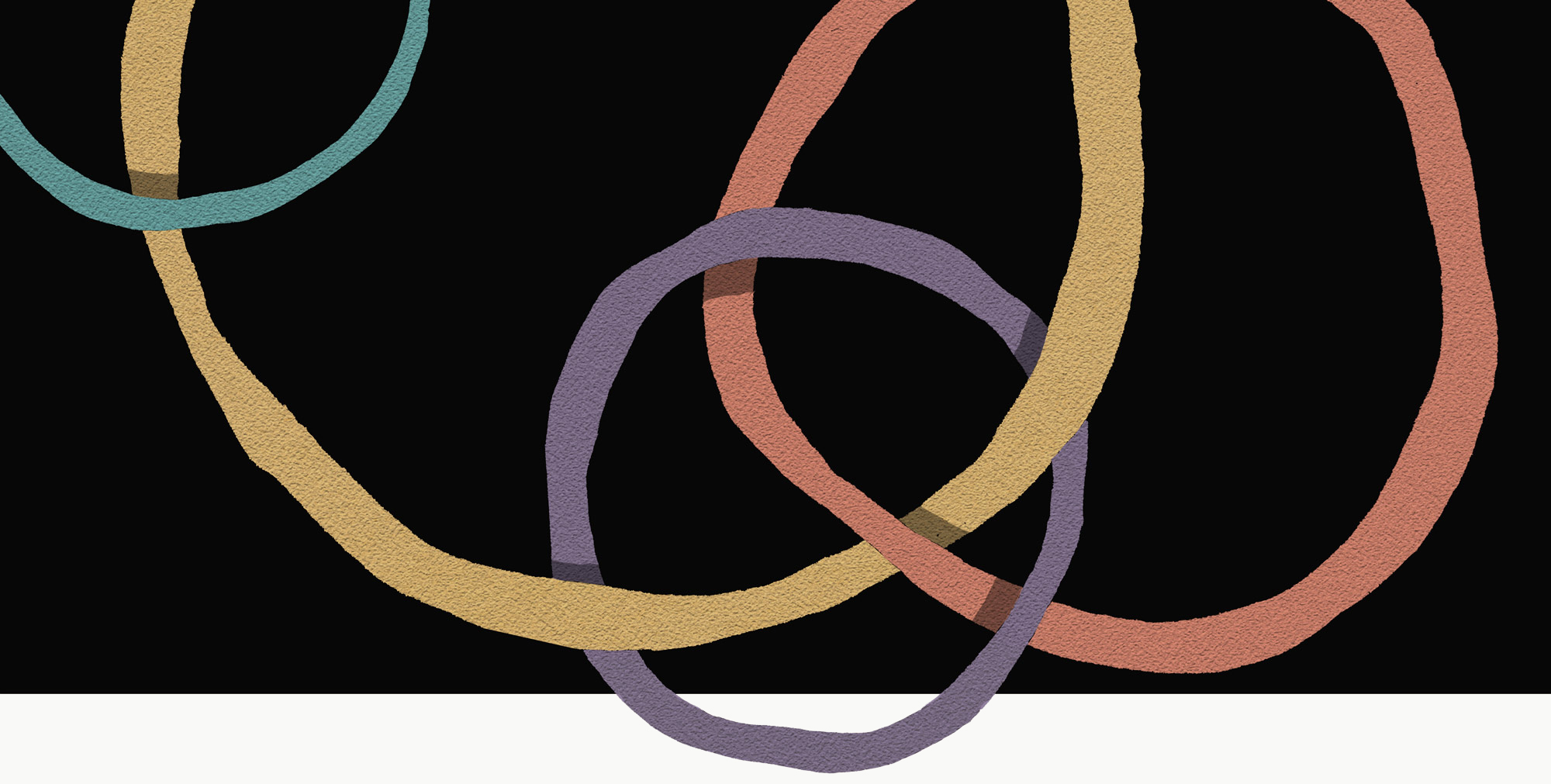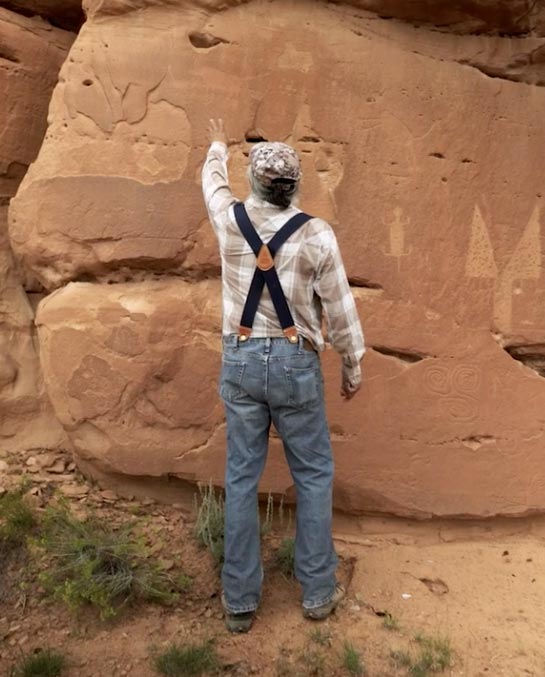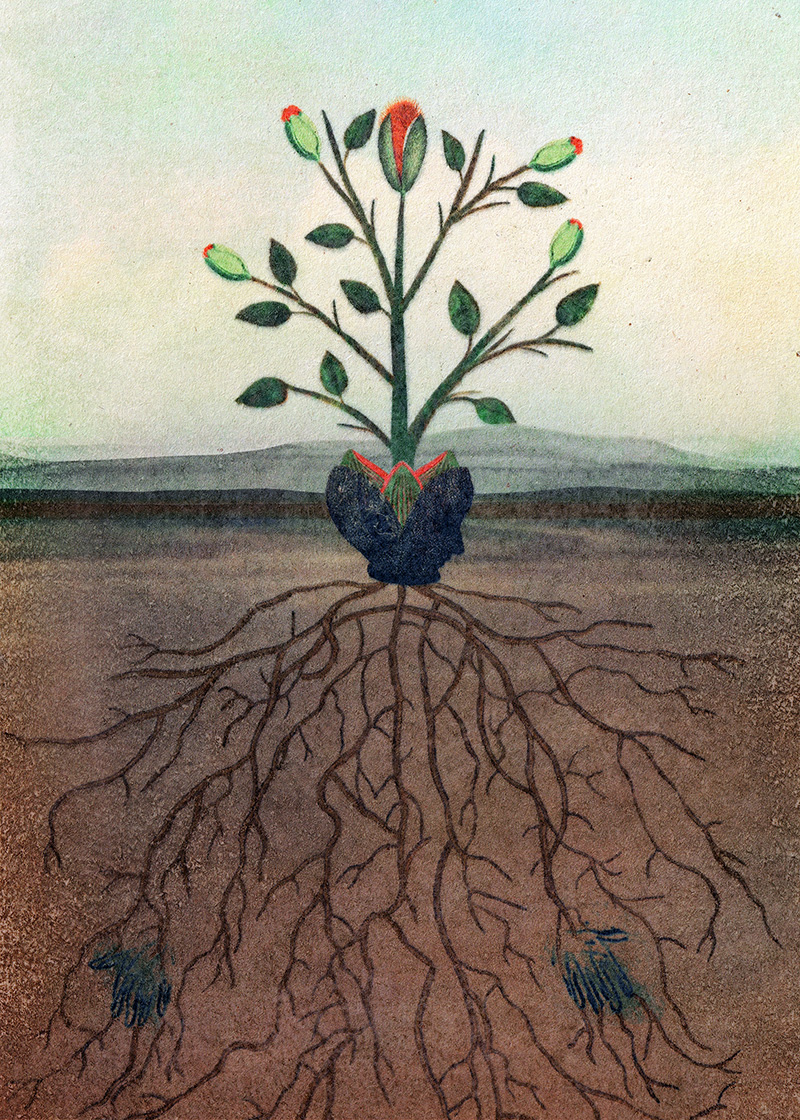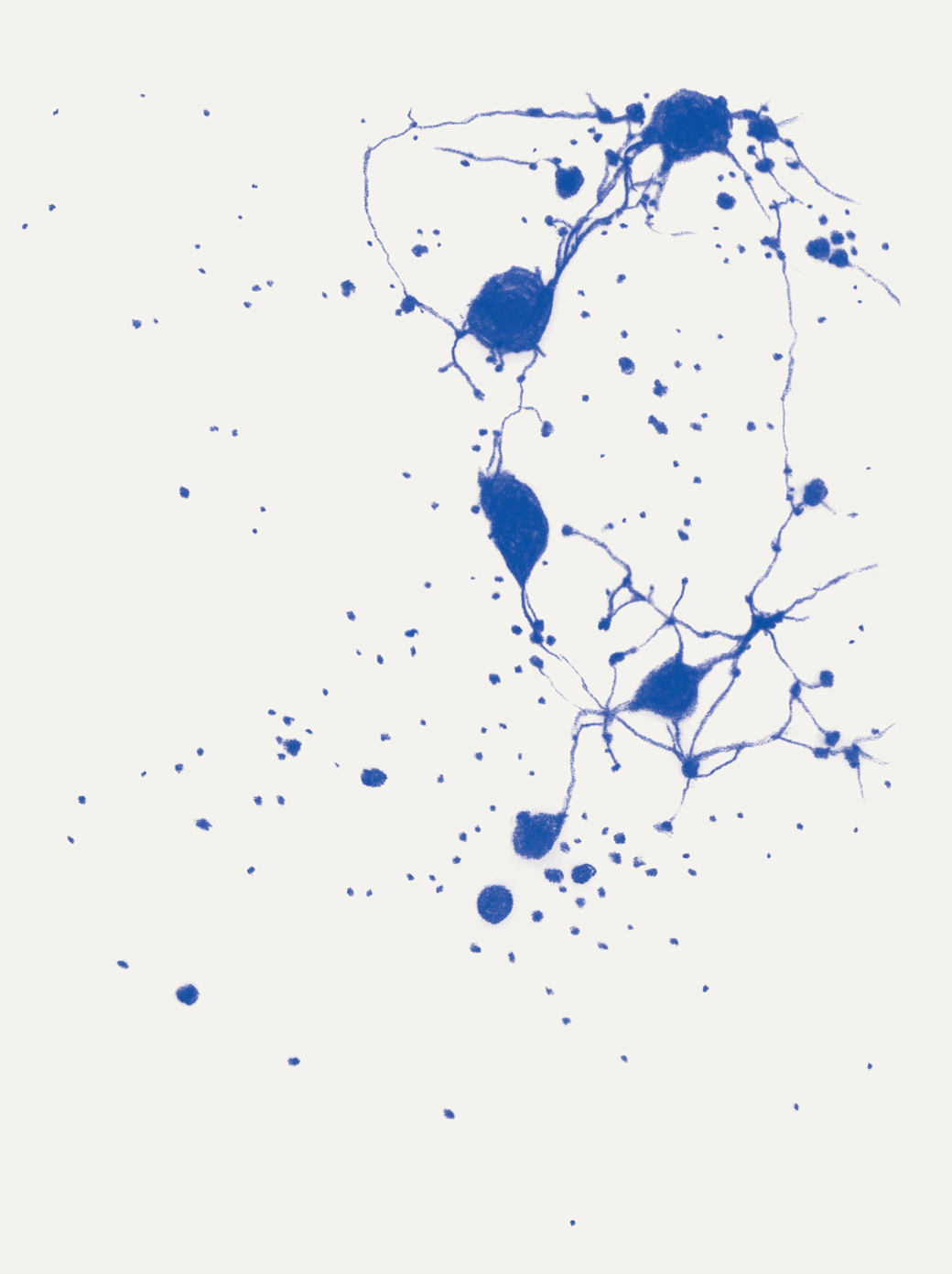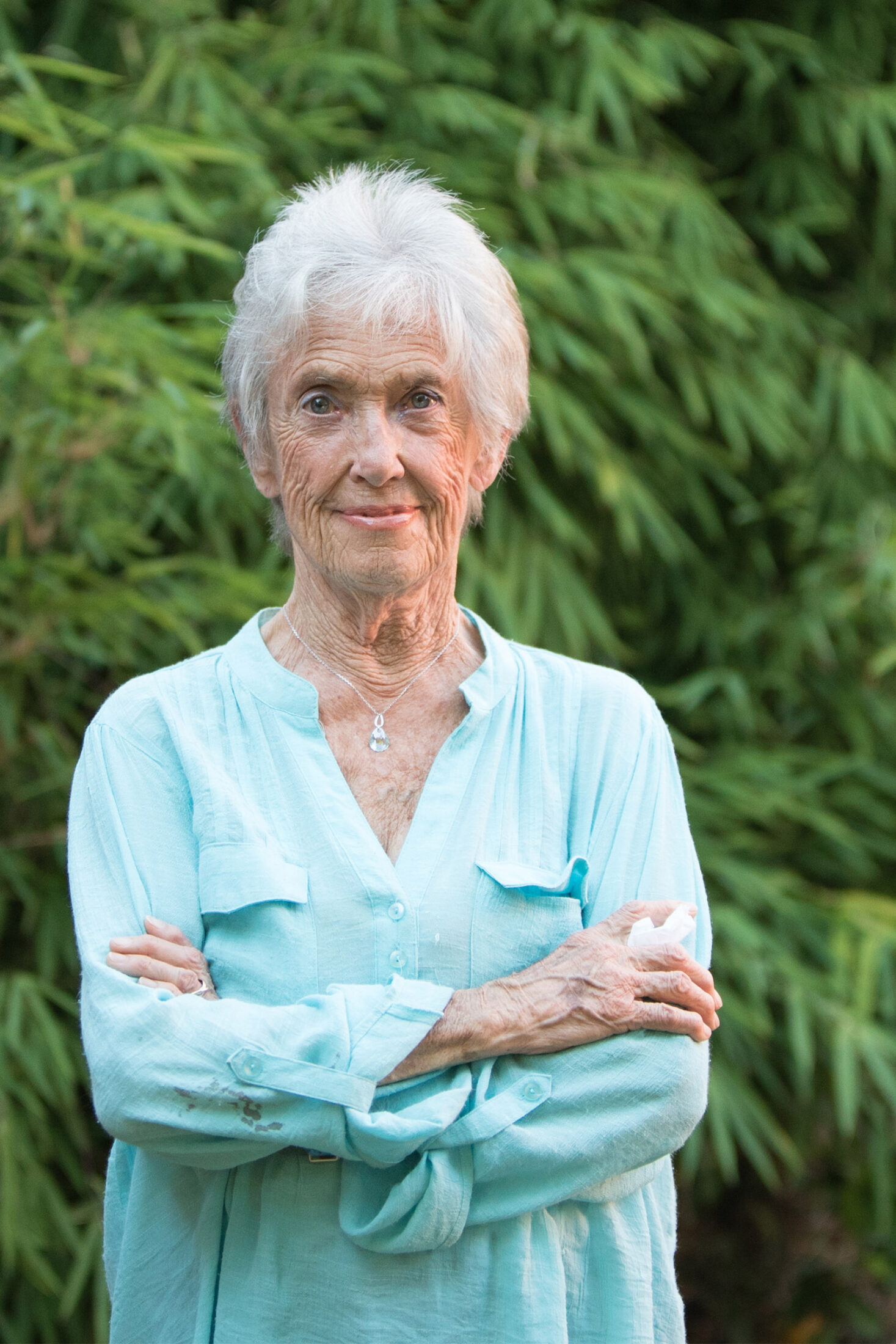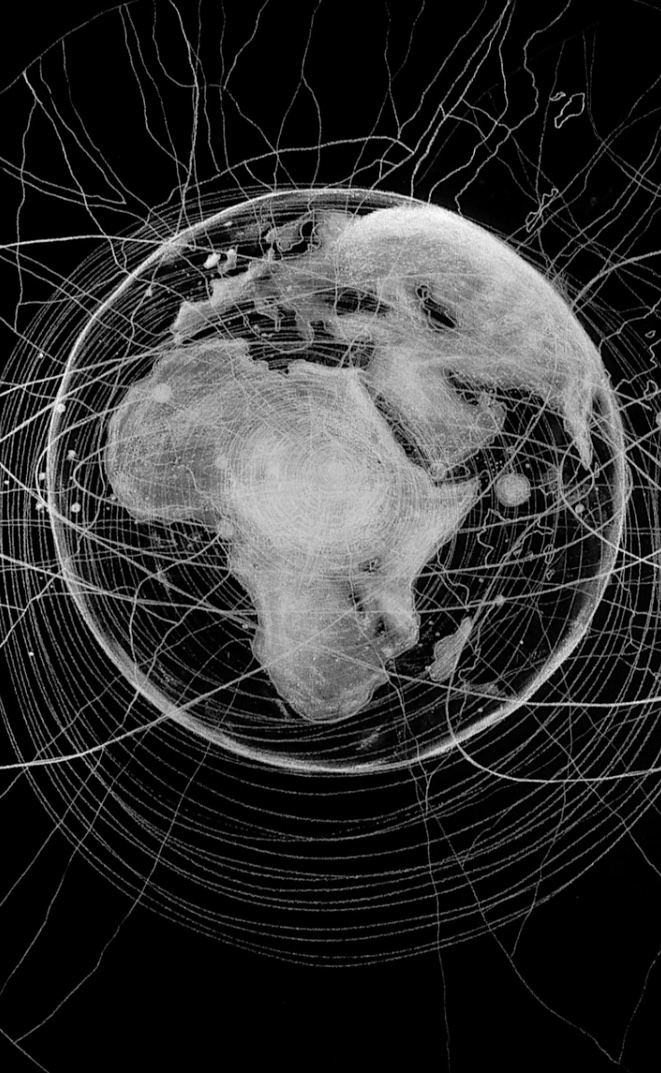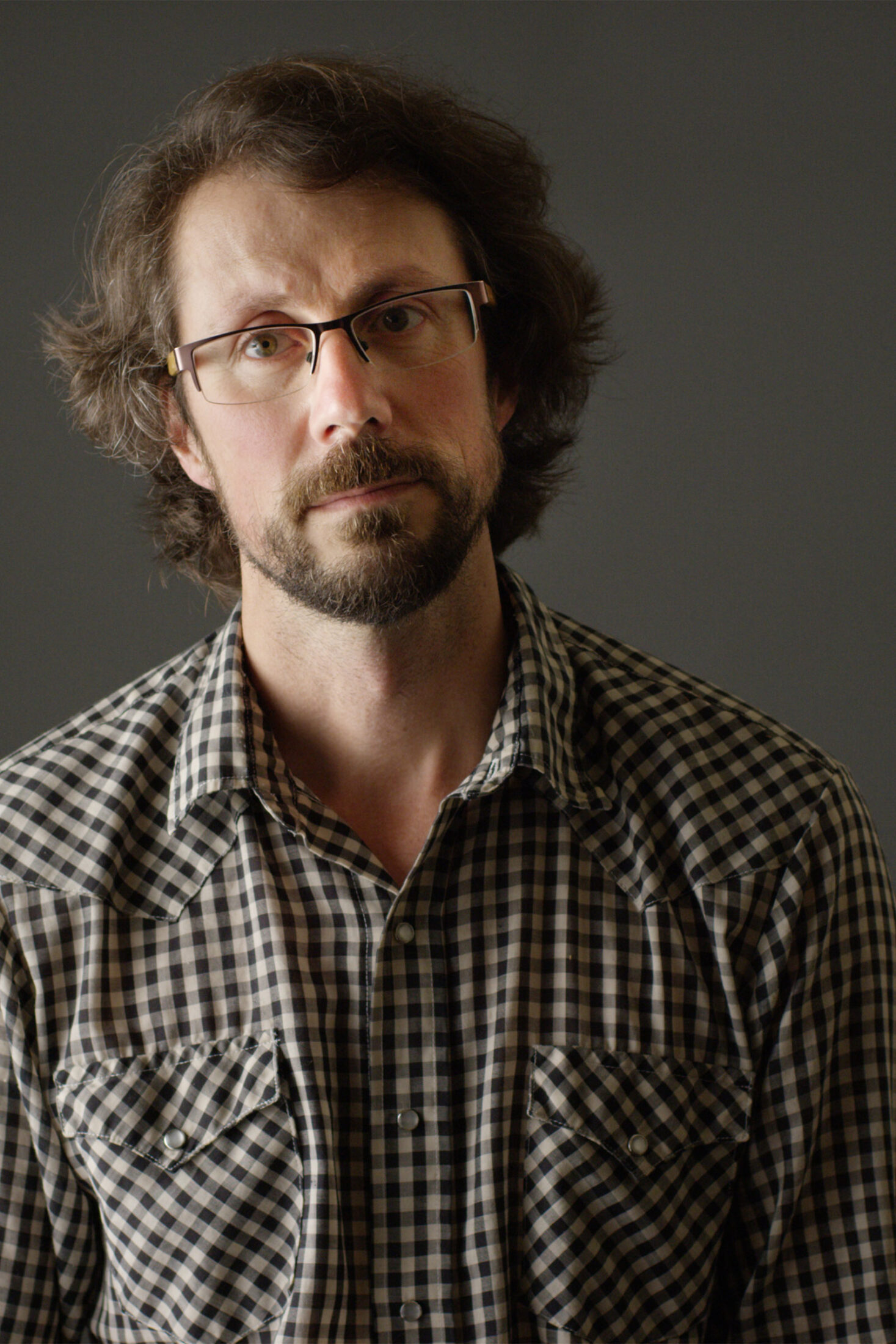
Paul Kingsnorth is a writer living in rural Ireland. In 2009, he created and launched Dark Mountain Project, a writers’ and artists’ movement designed to question the stories our culture is telling itself in a time of ecological and social unraveling. Paul has won various prizes for his poetry, including the 2012 Wenlock Prize. His first novel, The Wake, was longlisted for the Man Booker Prize and won the Gordon Burn Prize and the Bookseller Book of the Year Award. Paul’s second novel, Beast, was shortlisted for the Encore Award for the best second novel. The third, and final, installment in this trilogy, Alexandria, is forthcoming. Paul published his first collection of essays, Confessions of a Recovering Environmentalist, in 2017, and his most recent nonfiction book, Savage Gods, was released in 2019.
Studio Airport, founded by Bram Broerse and Maurits Wouters, is an interdisciplinary design studio that ventures out into the cultural ether to forage for anomalies, creating work that spans art, culture, science, and ecology. In addition to Emergence Magazine, their creative partners include the Design Museum, See All This Art Magazine, Slowness, Normal Phenomena of Life, and Sapiens Magazine. They serve as master tutors at the Design Academy Eindhoven and were recognized as European Agency of the Year 2024 by the EDA.
Ben Suliteanu is an aspiring filmmaker specializing in editing and sound design. He recently graduated from Stanford University with a bachelor’s degree in science, technology, and society.
Beginning with W. B. Yeats’s iconic poem, “The Second Coming,” this essay is an inquiry into linear and cyclical time and the sweeping momentum of progress.
We have broken the circle and made ourselves a new image to live by. Not a return, but an onward movement. Not a cycle, but a progression. Not a circle, but a straight line.
NOT FAR FROM where I live in the west of Ireland is the former home of the country’s greatest modern poet, William Butler Yeats. Thoor Ballylee, an old Norman tower attached to a low thatched cottage, is set in a quiet river valley which seems to have remained curiously untouched even as the development boom of the “Celtic Tiger” years has changed Ireland almost beyond recognition.
Time has toyed with this column of stone. Built in the fifteenth century by an Anglo-Norman family, the Burkes, as a grand military and social symbol, it later fell into disuse, at one stage being rented for five pounds by a farmer to house his cattle. The poet bought it as a ruin a century ago and spent several years restoring it with a local architect. When he was finished, he composed a poem which can still be read today, carved in weatherworn slate on the outside of the tower wall:
I, the poet William Yeats,
With old mill boards and sea-green slates,
And smithy work from the Gort forge,
Restored this tower for my wife George.
And may these characters remain
When all is ruin once again.
It didn’t take long for the tower to become ruin once again. Yeats moved out in 1929, a decade before his death, and Thoor Ballylee was abandoned. In the 1960s, it was reopened as a museum by admirers of the poet, then later taken over by the government, which promptly ran out of restoration funds when the country went bust in 2008. The tower was abandoned again, then restored and reopened to the public by a band of local enthusiasts. Shortly after it reopened, a series of devastating floods wrecked their work. The river adjacent to the tower has flooded every few years since the twenty-first century began, in common with much of the rest of the country, as climate change throws old patterns up in the air. Near rivers and on flood plains and canal banks across Ireland, all is ruin most winters now.
It was while he was living at Thoor Ballylee that Yeats wrote one of his greatest and most mysterious poems, “The Second Coming.” Dense with symbolism and heavy with prophetic energy, “The Second Coming” is a foretaste of fated catastrophe:
Turning and turning in the widening gyre
The falcon cannot hear the falconer;
Things fall apart; the centre cannot hold;
Mere anarchy is loosed upon the world,
The blood-dimmed tide is loosed, and everywhere
The ceremony of innocence is drowned;
The imagery is mystical, the cadences biblical. Something is coming to an end, something new is being born. Destiny is at work, beyond the grasp of mere humans.
Surely some revelation is at hand;
Surely the Second Coming is at hand.
“The Second Coming” presents us with a particular image of time: a movement from light into darkness and back again. There has been a First Coming, now there will be a Second; and this one will be the antithesis, after two thousand years, of its predecessor:
The darkness drops again; but now I know
That twenty centuries of stony sleep
Were vexed to nightmare by a rocking cradle,
And what rough beast, its hour come round at last,
Slouches towards Bethlehem to be born?
I remember having to study this poem at school and having no idea at all what it was about, even as I could feel, on some level, its power. At sixteen years old, I was not qualified to parse its dense, mythic imagery. What was going on here? What rough beast? What falcon? What was a ceremony of innocence? Why twenty centuries? And what on earth was a gyre?
The answers are to be found in the work Yeats and his wife, George, began at Thoor Ballylee, which they bought shortly before their marriage in 1917. Only a few days after their wedding, George—who shared Yeats’s passion for the esoteric—began to produce what spiritualists then called “automatic writing.” She would sit and write, in a trance state, producing words which she believed were handed down to her by a “superior power.” After several years of these writing sessions, in which Yeats would ask questions and George produce answers, the poet began to believe he was being given access to a “system” which explained much about the mystery of human life and the universe itself.
Yeats’s “system” fed directly into the imagery of “The Second Coming.” It also led to by far his strangest book, A Vision, published towards the end of his life, in which he attempted to explain the revelations he and George had had in the tower. One of its central images was a picture of time, of history itself, as a series of great repeating cycles, beyond the ken and power of humankind. Yeats became convinced that history, biology, and metaphysics were all governed by these cycles, which he called “gyres.”
A gyre, when drawn out as a diagram, looks like a cone. It begins as a tiny circle, then spirals outwards and forwards, widening with each revolution. When it reaches its widest point, it is unable to hold together; each point of the circle is too far from the others to be able to connect or communicate. The gyre begins to break apart under its own weight; but at the same time, another begins spiraling out again in the opposite direction to the first. To Yeats, this explained the great historical cycles of rise and fall that he seemed to see in human civilizations, religious notions, and ways of seeing.
The time is ripe for new cosmologies, built on the best of the old ones.
Each gyre, Yeats stated, has a fixed timescale: just over two thousand years. As it reaches its widest point, the seed of a new gyre is sown, which will be the antithesis of that which has gone before. The gyre which began with the birth of Christ, he suggested, sowed the seed in the West of two thousand years of monotheism and Father-worship, replacing the localized paganisms and small cultures that had gone before it. After two thousand years, the Christ-gyre would begin to spiral down, and the seed of its antithesis would be sown:
At the present moment the life gyre is sweeping outward, unlike that before the birth of Christ which was narrowing, and has almost reached its greatest expansion. The revelation which approaches will however take its character from the contrary movement of the interior gyre. All our scientific, democratic, fact-accumulating, heterogeneous civilization belongs to the outward gyre and prepares not the continuance of itself but the revelation as in a lightning flash, though in a flash that will not strike only in one place, and will for a time be constantly repeated, of the civilization that must slowly take its place.
This is the subject of “The Second Coming.” We are now reaching the historical moment at which, according to Yeats’s theory, the age of monotheism, centralization, and linear time itself begins to crumble. Some rough beast, perhaps slouching towards Bethlehem even now, will sow the seeds of a very different way of seeing and being. It will take another millennium for those seeds to fully grow and flourish. But in the collapse of whole ways of understanding, as the center no longer holds, as anarchy spreads, as stories no longer function, are somewhere to be found the dim outlines of a new seeing.
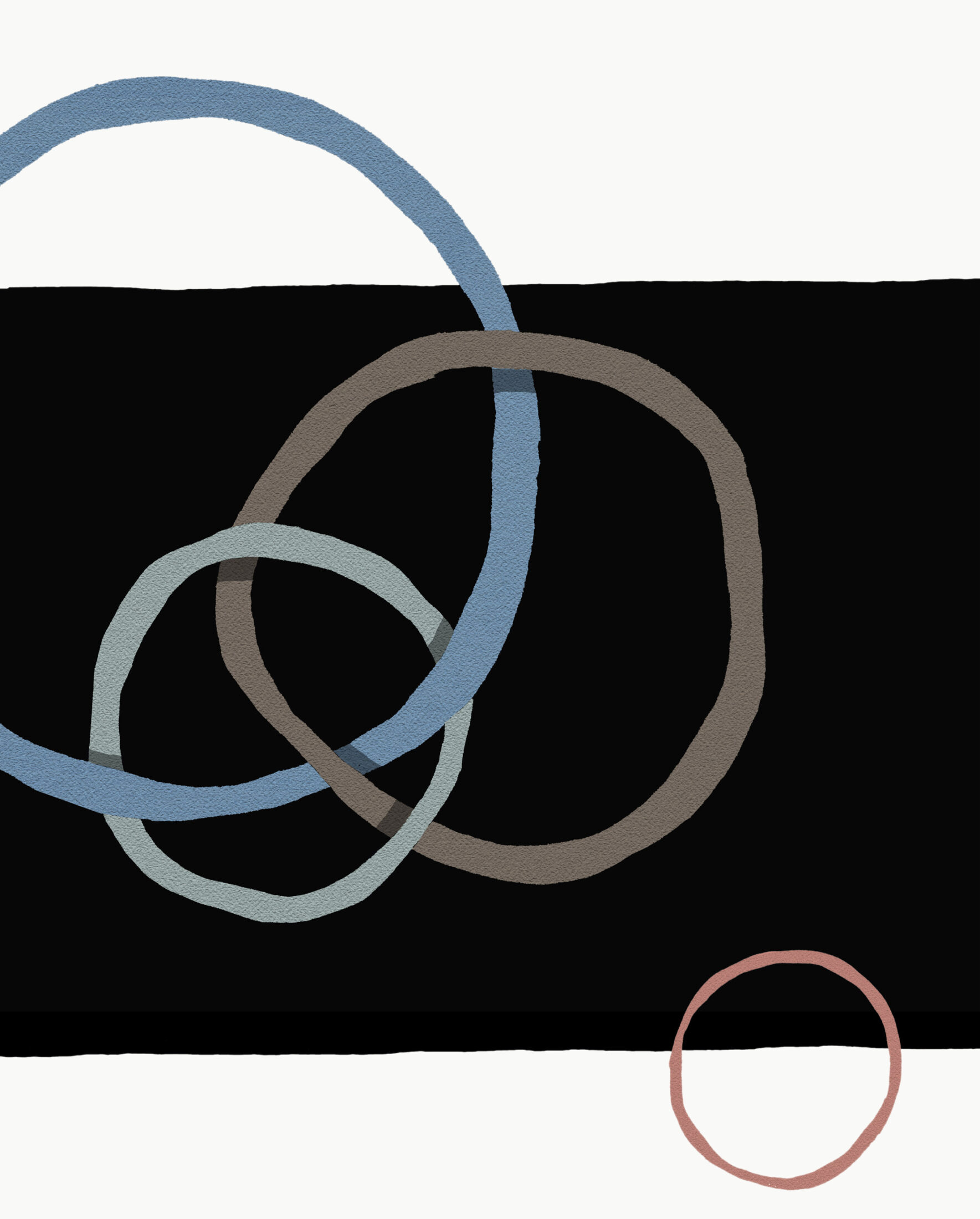
Explicit in Yeats’s vision of a history governed by gyres is a very particular notion of time. In this vision, time is a series of cycles. If it is not quite a circle, it is not a line either. Perhaps the most challenging and unwelcome aspect of the vision, at least to our eyes, is the notion that time is both cyclical and fated. History moves in cycles and, in its broadest aspect, we cannot control it. It controls us.
There is nothing particularly unusual about this vision of time. If we step back to take in the sweep of world history and the diversity of human cultures, we begin to see that it is pretty standard fare. This great circular planet has offered up circular visions of time to most of its peoples. Hindu cosmology, for example, sees time circling through four great cycles, or yugas, each of which lasts many tens of thousands of years and each of which becomes progressively more fragmented, before the cycle begins again. We are currently living through the last of the cycles, the Kali Yuga, an age of deterioration, decay, greed, and ecological destruction.
The cyclical nature of Hindu cosmology is mirrored throughout much of Asia, in Buddhism and Jainism, for example, in which each human life is a manifestation of the endless cycle of reincarnation and rebirth. It is mirrored too in the cosmology of classical Greece and Babylon, and in indigenous cultures around the world, from Aboriginal Australia to the Inca, Mayan, and Hopi cultures of the Americas. In this vision, time is a circle. Life is endlessly dying and being reborn, there are no beginnings and no ends, and each individual creature, human or otherwise, is a temporary part of a greater unfolding. Cultural ecologist David Abram, in his book The Spell of the Sensuous, explains it like this:
To indigenous, oral cultures, the ceaseless flux that we call “time” is overwhelmingly cyclical in character. . . . Time, in such a world, is not separable from the circular life of the sun and the moon, from the cycling of the seasons, the death and rebirth of the animals—from the eternal return of the greening earth.
These are nature cosmologies, developed by peoples who lived closely with the cycles of subsistence agriculture or hunting and gathering. Nature itself is cyclical—it is a cycle of flow and interconnection, with no obvious start or endpoint. Hence, most of the world’s human cultures from the premodern period—which covers 99 percent of human history—believed that time itself could be best understood in the way that nature presented it to them: not as a line but as a circle. Oglala Lakota medicine man Black Elk offered up perhaps the best-known enunciation of this indigenous cyclical worldview in the early twentieth century:
Everything the Power of the World does is done in a circle. The sky is round, and I have heard that the earth is round like a ball, and so are all the stars. The wind, in its greatest power, whirls. Birds make their nests in circles, for theirs is the same religion as ours. The sun comes forth and goes down again in a circle. The moon does the same, and both are round. Even the seasons form a great circle in their changing, and always come back again to where they were. The life of a man is a circle from childhood to childhood, and so it is in everything where power moves.
If the world, and time itself, is cyclical, then everything that will happen has already happened. Change is inevitable, death is part of that change, the future and the past hold hands. In a cyclical world, as in a calendar year, what has been will be again, and vice versa. The leaves of the tree die every autumn and grow every spring. Nothing changes and everything changes and each human life, like each leaf on a tree, is part of the endless, effortless, turning of the wheel.
But we do not live in that world. Or, rather: we do not think we do. We—the modern peoples of the post-Enlightenment, post-Reformation, post-industrial world—have invented a new and singular vision of time, and of life. We have broken the circle and made ourselves a new image to live by. Not a return, but an onward movement. Not a cycle, but a progression. Not a circle, but a straight line.
Time, imply the old stories, moves at different speeds, and in different ways, depending on our quality of seeing.
In 1940, a few months before his suicide as a prisoner of the fascist government of Spain, the German Jewish philosopher Walter Benjamin, despairing as a second catastrophic war engulfed Europe, reflected on a painting he had purchased twenty years earlier by the modernist artist Paul Klee. The painting shows a curious, lion-like angel, seemingly moving in one direction while his gaze is focused on another. Klee called the painting Angelus Novus. Benjamin called it the “Angel of History”:
His face is turned toward the past. Where we perceive a chain of events, he sees one single catastrophe which keeps piling wreckage upon wreckage and hurls it in front of his feet. The angel would like to stay, awaken the dead, and make whole what has been smashed. But a storm is blowing from Paradise; it has got caught in his wings with such violence that the angel can no longer close them. The storm irresistibly propels him into the future to which his back is turned, while the pile of debris before him grows skyward. This storm is what we call progress.
The notion of “progress”—the unsteady but inevitable improvement of the human condition—seemed absurd to Benjamin, as fascist armies swept across Europe and communist armies advanced to meet them, bodies piling up in the camps on both sides. But his deep pessimism was merely a photographic negative of the kind of positivist optimism commonly associated with those who identify as “progressives”: believers in the cult of the line.
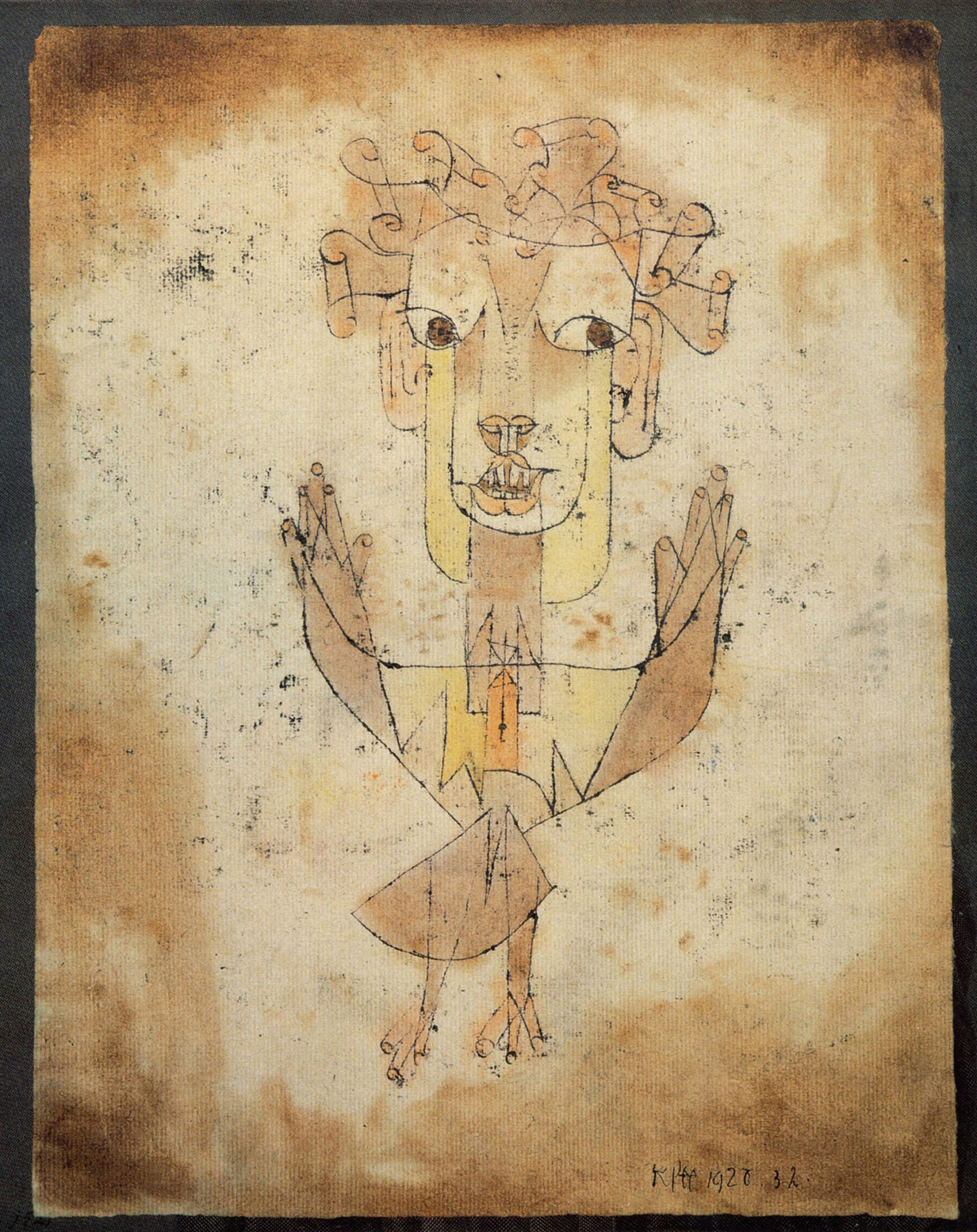
Whether we like it or not, those of us who live in the postmodern world are all progressives now. Even those of us who believe we are rebelling against this notion find ourselves caught up in it. We have been brought up to believe that history marches in one direction, and that this requires us to be either optimistic or pessimistic about the direction of the march. We can choose to believe that everything is getting better or that everything is getting worse, but both beliefs take us endlessly forward. Whether the past was misery and the future is utopia, or the past was the utopia and the future offers only apocalypse, the progressive vision requires us to believe that the line, not the circle, is the framing image of our journey through life.
In her exploration of the nature of modern time, Pip Pip, the author Jay Griffiths describes the measured, monitored regime which the average urban human now lives under:
Time’s measurement is everywhere. The gridded screen surrounds you like barbed wire. Leaving London, Berlin, New York, Washington or Paris: at the airport, every transaction, each ticket and money exchange is timed. Around Heathrow, as at any other major airport, there are clocks on corporate buildings and hotels, blinking the date and time, down to tenths of seconds, compressing time. CCTV times your progress along streets. Stop to buy a shoelace and your receipt will tell you the date and time—to the minute. The pips of time measurement are spat out by the radio. . . . Traffic lights run on timed schedules. Telephones tell you the time, breakfast TV has a constant clock, there are pingers on cookers and eggs have sell-by dates printed on their very shells. Urban modernity lives under an assault of clocks.
Measuring time is hardly new. The clock, in its various forms, has been with us for at least eighteen centuries. Elsewhere in her book, Griffiths shows how the people of the Andaman Islands measure time by scent, and the Karen hill tribes of northern Thailand use the forests they live in as a giant clock. European agriculturalists have for millennia marked the year with a series of ritual festivals, at midsummer, midwinter, and the equinoxes. Humans have been using bones to tally months and days since the Upper Paleolithic.
But measuring or tallying the cycles of the year has a very different taste to what Griffiths calls “the assault of clocks.” The obsessive time-measurement of modernity is a product of the onward-pressing needs of industry and commerce. The Industrial Revolution broke the power of land-based communities and ushered in the urban mass society; and a mass society needs mass timekeeping. Progress, if it is to succeed, needs to be measurable at every point along its journey.
In my home country, Britain, the cradle of that revolution, the mass enclosure of farmland owned by peasant communities was the foundation of the enforced change from a cyclical, rural life to a linear, urban existence. Those people made homeless or workless by enclosure and—later—by the destruction of cottage industry by mechanization (the rebellion of the Luddites against this process was a last-ditch attempt to halt the industrial Machine in its tracks) trudged into the expanding cities to form the world’s first industrial proletariat, living in poverty under the watchful eye of the clock on the factory wall.
The Industrial Revolution could be seen as the theft of land, power, and time by the concentrated forces of industry. It paved the way for the society we live in today in the West—a world in which we have more disposable plastic than we know what to do with, but we have no power, and are subject always to the impersonal forces of state, corporation, and clock. You will be up at 7 and in your car at 8 and at your desk by 9, and you will be there until 6, and then you will drive home and you will repeat this pattern for 5 days in every 7 if you want the monthly injection of numbers into the bank account that you access with your smartphone, a device which measures time to the second, and can, if you so wish, measure also your heartbeat, footsteps, pulse, and the number of times you chew each mouthful of your dinner.
We are all slaves now to linear time. The march of industrialization is also the march of mechanization and standardization. It began by standardizing goods: tools, clothing, furniture, houses. Then it standardized nature: monoculture crops, factory farms, tree plantations, genetic engineering. Now it is standardizing humanity, through the spread of a global economy and its associated global culture of one-size-fits-all humans, bound together by their “shared values”: the values of the market and its associated political project, liberal democracy.
If a circle of time sees individual humans as part of an unending and largely unchangeable cycle, a line of time sees them as units. Units of production, units of consumption, units of progress, working together like ants towards a goal that is never quite defined but which always involves more work, more speed, more measurement, more control, more sameness. We believe that what we can measure we can control; and in the end, the concept of linear time—of linear progress—is a project of control. Progress adds up to exerting human control over the levers of nature itself.
In the early twentieth century, at the height of Western industrialism, the writer J. B. Priestley wrote of a nightmare that haunted him:
Between midnight and dawn, when sleep will not come and all the old wounds begin to ache, I often have a nightmare vision of a future world in which there are billions of people, all numbered and registered, with not a gleam of genius anywhere, not an original mind, a rich personality, on the whole packed globe. The twin ideals of our time, organisation and quantity, will have won forever.
We are perhaps not far now from the realization of Priestley’s vision. This is where the line of time takes us; it is the endpoint of progress. A machine world of machine people: productive, efficient, equal, self-monitored, self-measured, long-lived, and well-behaved. Perhaps ultimately, with the aid of silicon chips or AI programs, immortal too. As with any vision of the future, perspectives on this endgame are divided. If you work for Google or Facebook, the future probably looks like heaven. To some of the rest of us, it is a vision of hell.
Progress is a quest for transcendence: a quest to always be somewhere else; somewhere better.
Heaven and hell, though, are also progressive concepts. The great, world- conquering Abrahamic religions gave us, in their mainstream manifestations, a vision of a world governed by a stern Sky Father, whose cosmology would steward us from Genesis to Apocalypse. Good behavior was the path to leaving this world behind and being promoted after death to another, better, one. This God is not immanent—present in the world—but transcendent—above it—and this is where we are encouraged to be too.
It is not hard to see how this cosmology translates into its secular version—silicon transcendence via computer; an uploaded immortality. In essence, they are the same story; only in the newer version, we have made ourselves the Sky Fathers. There is, after all, no need of God if you can do His job better.
It is not hard to see, either, how the progressive vision, in its religious or its secular form, has led us to ravage the earth: to disconnect us from nature and our own bodies, entomb us in dying cities, suck the water from the aquifers, fell the forests, and replace the fish in the oceans with plastic. Progress is a quest for transcendence: a quest to always be somewhere else; somewhere better. Mass extinction and climate change represent the collateral damage of linear progress: regrettable but necessary if we are to move forward to where we must be.
If we believe the poet, this is what happens when gyres come to an end. In Yeats’s cosmology, the winding down of one gyre sows the seeds of the next, which is its antithesis. Thousands of years of polytheism gave way to thousands of years of Abrahamic monotheism, which later spawned a secular variant: progress. Now those worldviews are hitting planetary boundaries and stumbling, what rough beast will sow new seeds, and what will the shoots look like?
It seems to me that—appropriately—a return is in order. Not the kind of straw-man “return” which disciples of progress so love to mock—the notion of “going back” to some particular period of history, whether it be the High Middle Ages or the Upper Paleolithic, where we might imagine a “better world” to have existed. A return to cyclical thinking—to notions of fate and repeating time, to an understanding of the small place of a single life in the great unfolding—would be something different. It might allow us again to notice the other life forms that surround us, to see ourselves in the cycle of life, and to sit amongst the ruins of our fantasies not with eyes full of despair, but of possibility.
If Yeats was right, and some revelation is at hand as our systems and assumptions crumble under the weight of the ecological overshoot we have set in motion, the time is ripe for new cosmologies, built on the best of the old ones. If the progressive project was about controlling time in order to control history and, ultimately, nature, then its cascading failure is a chance to reassess what time is, how we see it, and where we are within it. What if we are at the end of an age of monotheisms and monocultures; an age which could only ever be supported by expansion and colonization? What if our challenge now is to build a series of smaller visions, focused less on the future and more on the present; less on the sky and more on the ground?
Yeats knew well how curious and unpredictable time was, and so did the Irish peasantry he walked among, whose lives were still measured by the old cycles. Few people who casually read his poetry know much about A Vision, or have much interest in his more esoteric notions and occult theories. But most have heard of his early book The Celtic Twilight, in which the young poet, determined to rebuild a sense of “Celtic” identity for a newly nationalist Ireland, wandered the country collecting the folk tales of the peasantry and weaving them into a tapestry of his own particular making.
The tales in The Celtic Twilight are full of ghosts, demon dogs, enchanted woods, mermaids, and—most of all—meetings between humans and the Sidhe, the ancient faerie race who dwell in the “dim kingdom” beyond the reach of humanity, and whose understanding of time is unrelated to that of humans. The notion that human children were sometimes stolen by the Sidhe and taken to their timeless domain inspired one of Yeats’s early poems, “The Stolen Child”:
Come away, O human child!
To the waters and the wild
With a faery, hand in hand,
For the world’s more full of weeping than you can understand.
Any adult human who makes the mistake of eating faerie food, or any child unfortunate enough to be kidnapped in this way and taken below the hollow hills, might spend an ageless eternity in another land while time passes above at a very different speed. Seven years under the hill might amount to centuries in our world. British and Irish folklore is full of tales of this strange, parallel kingdom in which linear, human, surface time does not function. Perhaps this is the realm in which imagination is born, and new ways of seeing created; the realm in which we meet with the spirits, and the gods. As Yeats put it himself in The Celtic Twilight:
Are there not moods which need heaven, hell, purgatory, and faeryland for their expression, no less than this dilapidated earth? Nay, are there not moods which shall find no expression unless there be men who dare to mix heaven, hell, purgatory, and faeryland together, or even to set the heads of beasts to the bodies of men, or to thrust the souls of men into the heart of rocks?
Time, imply the old stories, moves at different speeds, and in different ways, depending on our quality of seeing. If we choose a different notion of time, we can have one. Linear progress commits many crimes against nature and humanity, but one of the worst is to promote the notion that no other way of seeing is valid; all have been superseded by the long march into the future. Yeats, poet and magician, disagreed. “Everything exists,” he wrote, “everything is true, and the earth is only a little dust under our feet.”
